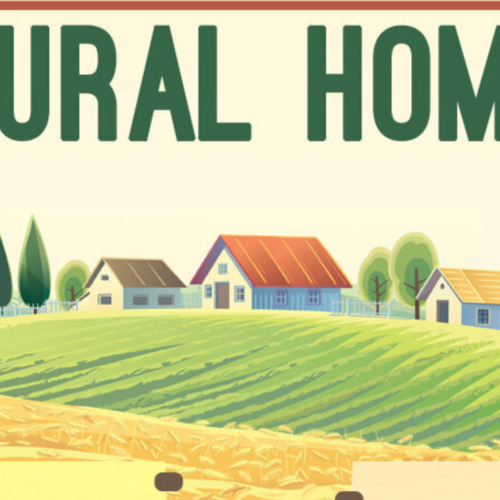Multigenerational living has become increasingly prevalent in the Bay Area, transforming the way people buy and build homes. This unique living arrangement, which typically involves aging parents, their adult children, and their teenage or young grandchildren, offers a range of benefits and challenges. In this article, we will explore the factors driving the rise of multigenerational living in the Bay Area, the practical considerations for families, and the impact on the real estate market.
The Factors Fueling the Shift
The rise of multigenerational living can be attributed to several factors. According to the National Association of Realtors (NAR), 12 percent of home buyers purchased a multi-generational home to take care of aging parents, accommodate adult children moving back home, and for cost-saving purposes. Additionally, economic and cultural factors, such as the growing immigrant population and changing demographics, have played a role in fostering this trend. Research from the Pew Research Center shows that Asian and Hispanic populations are more likely than whites to live in multigenerational households.
In the Bay Area, skyrocketing rents and home prices have also contributed to the rise of multigenerational living. Many individuals, especially millennials burdened with student debt or struggling to find high-paying jobs, choose to move back into their family homes to save money and establish a stronger financial foundation. Similarly, adult children offer their homes to their aging parents, providing a convenient and cost-effective option that saves on child care expenses and fosters intergenerational support.
The Benefits of Multigenerational Living
Multigenerational living offers numerous practical, economic, and emotional benefits for families in the Bay Area.
Financial Stability
One of the primary advantages is the ability to pool resources and share household costs. Families can split mortgage payments, utilities, bills, and even groceries, resulting in significant cost savings for all members. However, it is crucial to establish clear agreements on how expenses will be divided to avoid potential conflicts or misunderstandings.
Intergenerational Support
Living together allows family members to support one another in various ways. Aging parents can receive assistance with daily activities and care from their adult children, while adult children can benefit from the wisdom and experience of their parents. This intergenerational support system strengthens family bonds and fosters a sense of belonging and community.
Shared Responsibilities
Multigenerational households can distribute responsibilities more efficiently. For example, adult children can take care of household chores and child-rearing, allowing aging parents to enjoy their retirement and maintain a higher quality of life. This arrangement can alleviate the burden on individual family members and promote a healthier work-life balance.
Emotional Well-being
Living in a multigenerational household can enhance emotional well-being for all family members. The presence of multiple generations fosters a sense of security, as individuals have access to a broader support network and are less likely to feel isolated or lonely. It also provides an opportunity for family members to spend more quality time together, strengthening family ties and creating lasting memories.
Practical Considerations
While multigenerational living offers numerous benefits, it also presents certain challenges that families in the Bay Area should consider before embarking on this lifestyle.
Privacy Concerns
Maintaining privacy can be one of the most significant challenges in a multigenerational household. With multiple generations living under one roof, it is essential to establish boundaries and create dedicated spaces that allow each family member to have some privacy. Homes with separate entrances, walkways, kitchens, and bathrooms can help preserve family harmony while ensuring everyone’s comfort.
Household Expenses
Managing household costs and budgeting can be complex when multiple generations contribute to the finances. It is crucial to have open and honest discussions about how expenses will be divided and to establish a clear financial plan. Families should analyze their expenses, go over their budgets, and address any concerns to avoid potential conflicts down the line.
Zoning and Legal Restrictions
Granny studios, in-law suites, and other accessory dwelling units may be subject to local building codes and zoning restrictions. Historically, some cities have more lenient regulations, while others impose stricter rules to differentiate between homes designed for family use and those intended for rental purposes. However, the adoption of SB-9 in California in 2022 has made it much easier to adapt any single-family residence into something more suitable for multigenerational living. Families considering multigenerational living should familiarize themselves with local regulations and consult with a local real estate professional to navigate any legal hurdles.
The Impact on the Bay Area Real Estate Market
The rise of multigenerational living has had a notable impact on the Bay Area real estate market. Builders and developers have responded to the demand by constructing homes that cater specifically to multigenerational families. These homes often feature multiple kitchens, separate living areas, bathrooms, and entrances to accommodate the unique needs and privacy requirements of each generation.
Furthermore, the demand for multigenerational homes has influenced the overall housing market. As more families opt for this living arrangement, the demand for larger homes with flexible layouts and additional living spaces has increased. This trend has also led to a rise in home renovations, as families modify their existing homes to create separate living areas or build additional dwelling units.
In conclusion, the rise of multigenerational living in the Bay Area reflects a shift in housing preferences driven by financial, cultural, and demographic factors. While this living arrangement offers numerous benefits, it is essential for families to carefully consider the practical considerations and potential challenges before committing to multigenerational living. With the right planning and communication, families can create a harmonious and supportive environment that enriches the lives of all generations involved.
Check out these Great Homes for Multi-Generational Living
2
3
4
5
6
7
8
9
10
11
12
13
14
15
16
17
18
19
20
21
22
23
24
25




